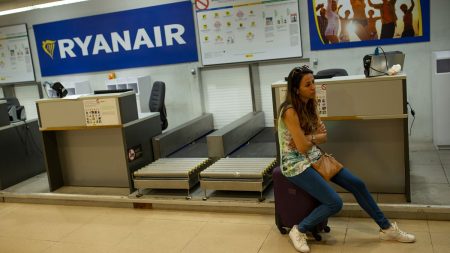The convenience of a short airport transfer is a significant factor for travelers, especially after a long flight. While some airports misleadingly suggest proximity to their namesake cities, many are situated surprisingly far, necessitating lengthy and often expensive journeys to reach the actual urban center. Examples of this deceptive naming convention include Paris-Vatry Airport, located a substantial 160 km from Paris, and Frankfurt Hahn, which sits 125 km from Frankfurt and, ironically, closer to Luxembourg. Such distances can add hours to a journey, transforming a much-anticipated arrival into a tedious commute. Fortunately, several airports prioritize seamless transitions, offering quick and affordable access to the heart of their respective cities.
Gibraltar International Airport exemplifies the ideal of airport proximity, practically touching down in the city center. A mere 1.4 km separates the runway from the historic Moorish Castle and Market Place. Travelers can choose between a swift five-minute bus ride for under €2 or a pleasant 15-minute walk, a unique experience involving crossing the airport runway. Pisa International Airport in Italy offers a similar level of convenience, built essentially atop the city center. While the central railway station is just 1.5 km away, the historic center is approximately 3 km distant. However, Pisa’s efficient people-mover system bridges this gap, shuttling passengers between the airport and the central railway station in approximately five minutes for €6.50.
Tallinn Airport in Estonia also boasts excellent city access, situated just 4 km from the historic center. A 15-minute bus or tram ride, costing a mere €2, ensures a quick and economical transfer. Similarly, Vilnius Airport in Lithuania is located a convenient 5.9 km south of the city center, with direct buses running every 10 minutes for as little as €0.65. These airports demonstrate that proximity and affordable transport can significantly enhance the travel experience.
Beyond sheer proximity, efficient public transport links are crucial for seamless airport transfers. Recognizing this, many European cities have invested in people-mover systems to expedite passenger transit. Lisbon Airport, despite being 10 km from the city center, provides a direct rail connection via the Aeroporto-Saldanha line, reaching the historic center in under 20 minutes for a few euros. Malaga Airport similarly boasts a train station directly outside the terminal, facilitating a 12-minute transfer to the city center via the C-1 line, which also connects to popular coastal destinations.
Zurich Airport offers an impressively rapid 10-minute transfer to the Hauptbahnhof main station using the S2 or S16 train lines. Copenhagen Airport also merits mention, providing a direct train to Central Station in just 13 minutes for under €5. These examples highlight the effectiveness of well-planned and integrated public transport systems in streamlining airport transfers.
While the allure of ride-hailing services is undeniable, European airports are increasingly promoting public transport as a cost-effective and environmentally friendly alternative. The reduced carbon footprint of public transport makes it a sustainable choice, while the often lower cost and dedicated airport connections can offer a less stressful and equally efficient transfer experience. By opting for public transport, travelers contribute to a greener future while potentially saving money and enjoying a seamless journey to their final destination. Considering these advantages, choosing public transport over private car services becomes a compelling option for environmentally conscious and budget-minded travelers.














